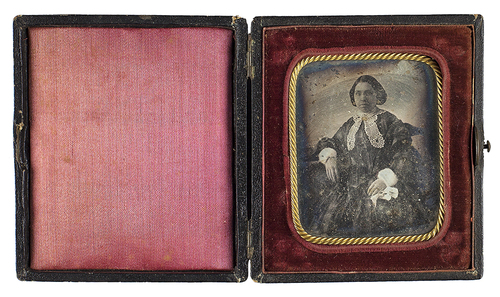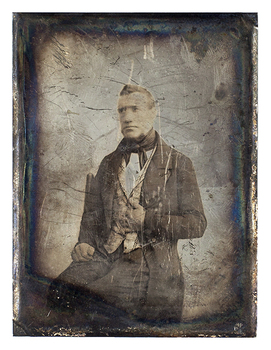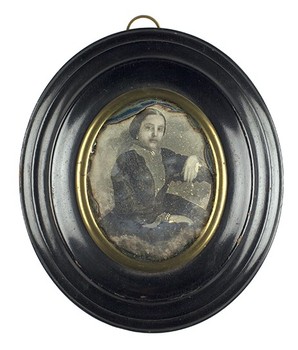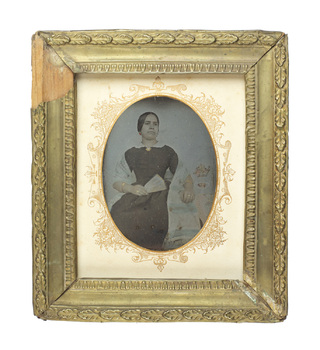|
Work and pictures lenders:
|
Fundació Frederic Mares. Barcelona
Arxiu Fotogràfic de Barcelona. Barcelona
Museu de la Ciencia de Terrasa. Terrasa
Museo Universidad de Navarra. Pamplona
Instituto para la Conservación del Patrimonio Español. Madrid
Museo Nacional del Romanticismo. Madrid
Colección Díaz Prósper. Valencia
Biblioteca Nacional de España. Madrid
Biblioteca Valenciana. Valencia
Colección Huguet. Valencia
Colección Fernández Rivero. Málaga
Colección Carlos Sánchez. Granada
|
THE TRIUMPH OF THE IMAGE The daguerreotype in Spain
The exhibition “The triumph of the image” approaches the first photographic procedure in history and its introduction in Spain.
The daguerreotype was presented in 1839 as a new technique capable of fixing the obtained images in the inside of a dark camera. It was the so much desired mechanical system for reality reproduction because, contrasting drawing, the daguerreotype only needed physics and chemistry to obtain a print of reality on a metal plate.
With this exhibition we aim at moulding a joint of variables that offer keys to understand the way of thinking and the ways of expression of an era. A perspective that is far from the mere inventories of chronologically arranged events or the creation of a catalogue of works under a fairly objective perspective. We hope to achieve a contextualisation of the birth of such a unique invention as the best exercise to get to know its history.
This exhibition is born under the wing of a research carried out for the Daguerreobase project, a website platform dedicated to collect and preserve the daguerreotypes existing in Europe. It also constitutes a network to define management standards: identification, description and conservation of this type of photographic materials in archives, libraries, museums and private collections across Europe. It opens the possibility of establishing relations and connections between these collections, creating a new scenario for the research in the daguerreotype field and, in the same way, it offers free access to our cultural heritage. Formed by a consortium of 18 members from 13 European countries, in which public and private institutions, collectors and photograph keepers participate, it is represented in Spain by the Universitat Politècnica de València through the Laboratory for the study of contemporary photographic materials (Lemfc).
There are yet many aspects of the daguerreotype that have not been studied, which will allow understanding the impact caused by photography in the European social, cultural and scientific history, and especially in Spain, where the specific studies have little relevance. That is why we, from Daguerreobase project, believe it important to gather as many information as possible about the daguerreotypes that have reached our days through the registration of information in a collective database. In the same way, the possibility of offering part of this knowledge in the European Library is a turning point in the dissemination of this early form of photography, which constitutes a whole Europe’s cultural heritage.
The exhibition includes a selection of daguerreotypes surrounded by the first photo equipment used for its realisation, the first related news and the first manuals translated to Spanish, as well as publications in which engravings made from daguerreotypes appear and press releases by those first itinerant daguerreotypists who crossed the Peninsula offering their services as portraitists. In the exhibition there can also be seen some works that predate the invention of photography, which explain us the image of Spain in the rest of Europe, the typical and the emblematic things, the continuity of the painted miniature tradition or the optical devices used for the practice of drawing.
Touring the exhibition through the different sections in which it is articulated is also touring the introduction of photography in Spain: from the engraving that starts the showing, entitled La daguerréotypomanie, to the creation of the first daguerreotype studios, through the technology of the new mean, the first visits of Spain, the scientific use of the daguerreotype, the role of aristocracy in its introduction or the development of the portrait guided by the photographer merchants, paying special attention to the daguerreotype in the city of Valencia. The showing ends with a small selection of contemporary daguerreotypes as a way of expression that still exist in the field of artistic creation.















